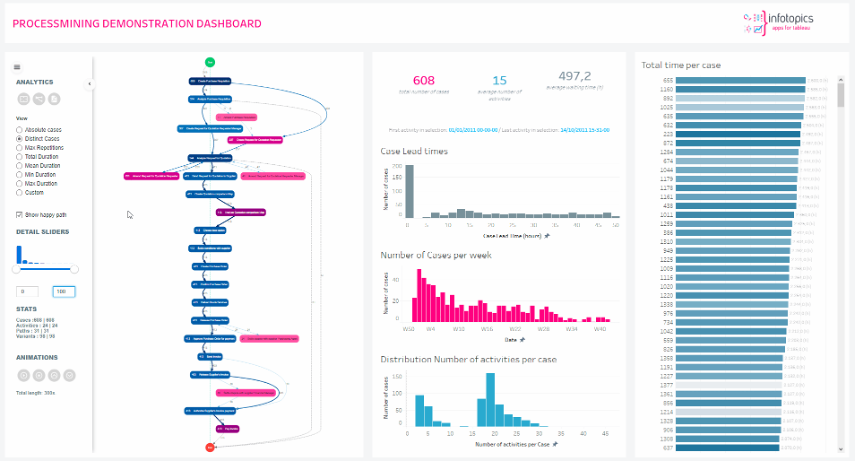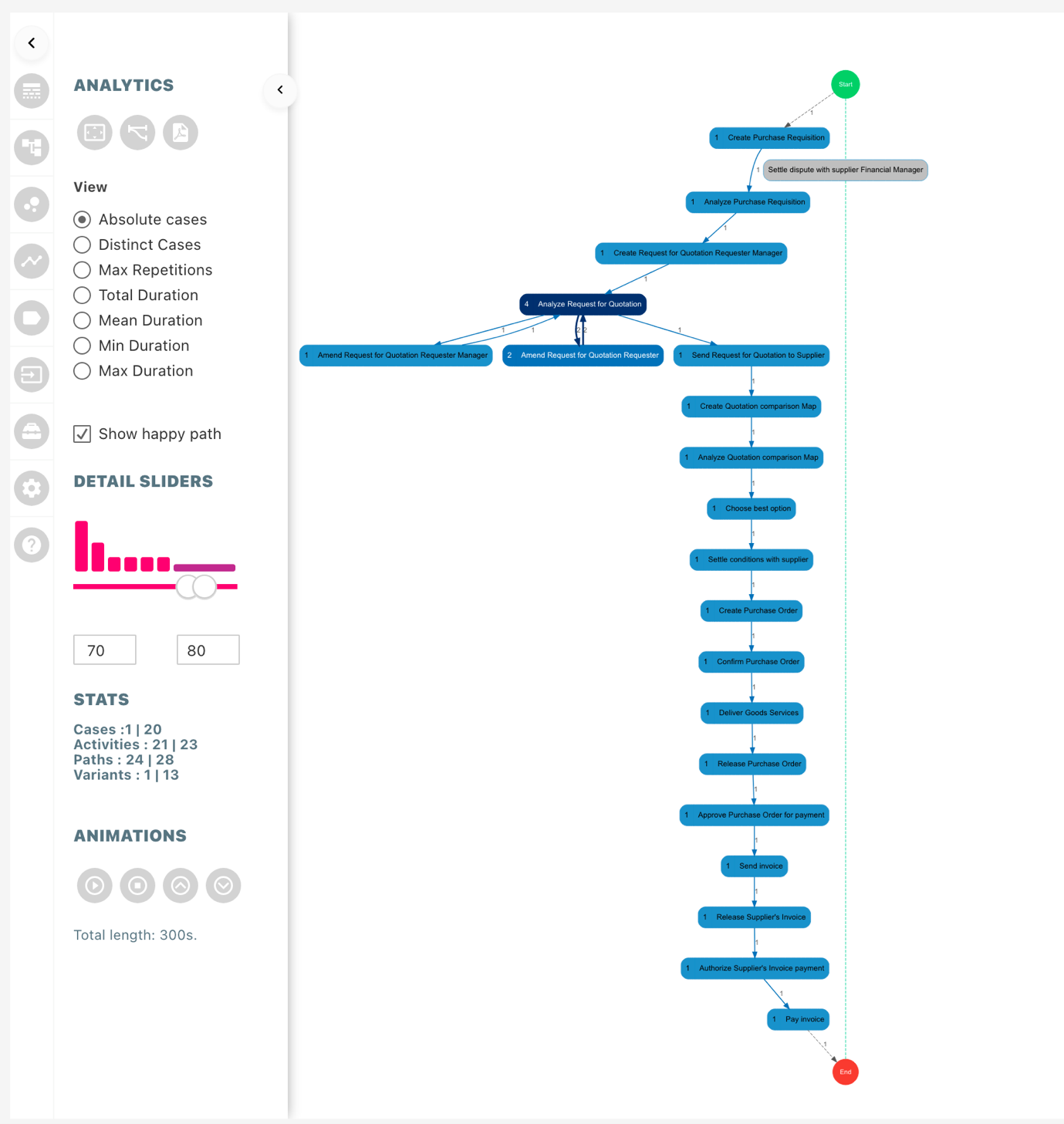Uncovering Hidden Insights:
The Power of Variant Analysis in ProcessMining
Understanding the Importance of Variant Analysis in Streamlining Processes
Spaghetti-like process maps are often difficult to understand and disturb insights and decision making. A solution to this problem is dividing the process into different sets/buckets based on variants. This is a strategic method where the data will be broken down based on sets of variations. Variations are unique paths cases travel through your process. When reducing the complexity of the process map, the user gets a very focused view of the processes that take place. Using the Variant Detail Slider allows the user to compare different (sets of) variants and get an overview of the process metrics. This allows for more structured and strategic analysis of data where the user does not have to look at the whole, complex dataset at once.
Variants for Improved Decision-Making in Process Mining
The variant analysis is an important technique in process mining that allows organizations to gain a deeper understanding of their processes. A process map can often be complex and difficult to understand, making it challenging to support informed decisions on for instance process optimizations. One solution to this problem is to divide the process into different sets based on variants.
A variant, in this context, is a unique path that a certain number of cases follow through the process. It represents clusters of process flows and gives insight into the diversity in the process. For example, a simple process with just 20 different steps and a pre-defined Service Level Agreement (SLA) can have hundreds of variants, making it hard for the human brain to comprehend. By focusing on variants, the user can look at the process at a higher or more focussed level and categorize based on selected sets of variants.
Furthermore, variants provide a simple and sequential view of the process execution. For example, in the discovered process map, you can get a bird’s eye view of the analyzed purchasing process and see that there is a dominant loop involving a process step that makes changes to the original purchase requisition. However, it’s hard to see how a single case moves through the process or how many cases go through this extra loop once, twice or even more often. To get a grip on a typical process execution pattern from start to end, we need to look at the variants.
Enhance Quality and Efficiency in Processes
Variant analysis is important because it helps organizations to think in scenarios. It’s much easier for us to understand a sequence of steps when we think about typical process execution patterns. It also allows organizations to distinguish mainstream variants from outliers and exceptions. The frequency of a variant tells you how frequent a specific execution pattern is and lets you distinguish mainstream variants from outliers and exceptions. Furthermore, the total number of variants alone tells you how much variation you have in your process, is it a structured or unstructured process? Following standard procedures is crucial to deliver constant quality and efficient services.
By understanding the variants in your process, you can find out which patterns deliver a good (or bad) performance or which variants might be fraudulent. You can then actively promote the well-performing variants for better and more consistent process performance.
Exploring Variants with the Detail Slider in Process Mining extension.
The detail slider in the process mining extension facilitates variant analysis. It allows the user to understand the flow of the process better by focusing on the most occurring or least occurring processes to understand and optimize the process flow. The histogram associated with the slider represents the overall distribution of variants, and the height of the bar represents the total number of cases in the respective bucket. The distribution is based on buckets (for example if there are 100 cases, then the first 10 cases will be in the first bin). The text boxes below the histogram can be used to manually enter the range the user wants to focus on.
The variant slider can also be used as a filter to change the focus of the whole dashboard to variants in the selected range. This can be done by the Dashboard actions present in the ProcessMining extension. The configuration is the same as the variant filter in the dashboard actions pane. The same configuration responds to the filter in the variants pane.
In conclusion, variant analysis is a powerful tool that allows organizations to gain a deeper understanding of their processes and make informed decisions about how to improve them. By focusing on variants, organizations can identify patterns that deliver good or bad performance and promote well-performing variants for better and more consistent process performance. The detail slider and variant slider are also essential features that allow organizations to focus on specific ranges of variants and use them as a filter to change the focus of the entire dashboard.




